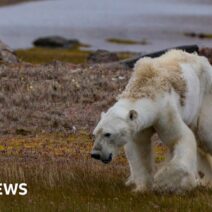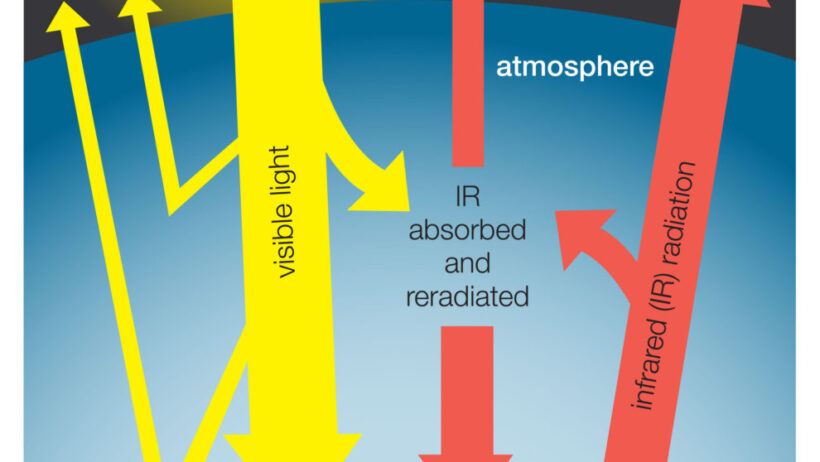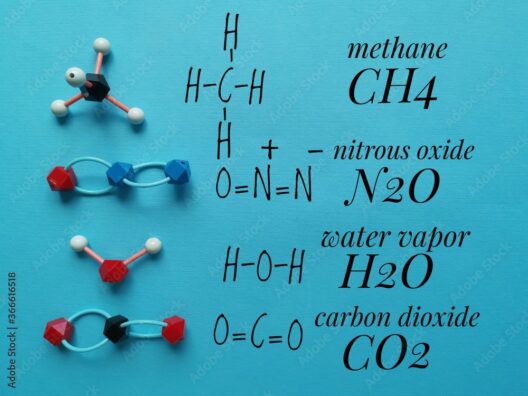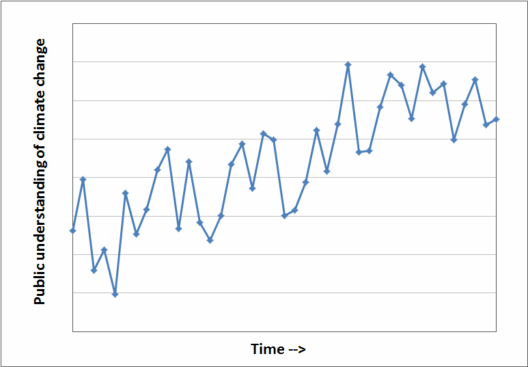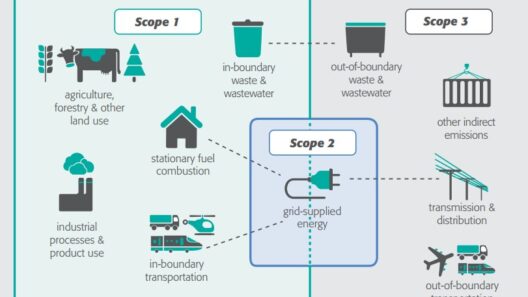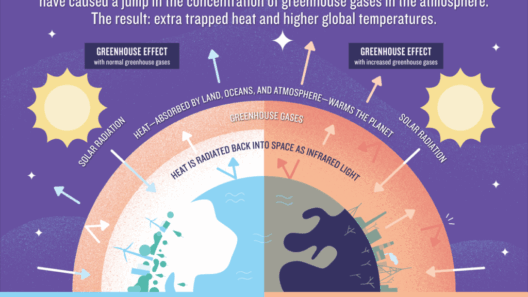Understanding the greenhouse effect is crucial to grasping how our planet operates in terms of temperature regulation. The interaction between solar energy and the Earth’s atmosphere plays a pivotal role in maintaining life as we know it. This article delves into the intricacies of the greenhouse effect, elucidating its mechanics, importance, and the implications of its enhancement due to human activities.
At its core, the greenhouse effect is a natural process that warms the Earth’s surface. Solar radiation reaches the Earth’s atmosphere – some of this radiation is reflected back to space and the rest is absorbed and re-radiated by greenhouse gases.
The primary greenhouse gases include carbon dioxide (CO₂), methane (CH₄), nitrous oxide (N₂O), and water vapor. While these gases comprise a small percentage of the atmosphere, they play a disproportionately significant role in maintaining the planet’s temperature.
When sunlight reaches the Earth, it is either absorbed by the land and oceans, which warms the planet, or reflected back into space. The absorbed energy is transformed into infrared radiation, a type of radiant heat. Greenhouse gases trap this heat in the atmosphere, preventing it from escaping back into space. This mechanism is analogous to how glass traps heat in a greenhouse, enabling plants to thrive even in colder climates.
The balance between incoming solar radiation and outgoing infrared energy determines the Earth’s overall temperature. If this balance shifts, it can lead to climate change, which poses a significant risk to ecosystems and human activities.
The greenhouse effect is not just a simple phenomenon; it encompasses a series of complex interactions involving numerous atmospheric components. To fully comprehend its implications, it is vital to examine how these gases interact with incoming solar energy, the effect of human activities, and the potential ramifications of a disrupted climate system.
The Importance of the Greenhouse Effect for Life on Earth
A deep appreciation of the greenhouse effect reveals its indispensable role in supporting life. Without this natural process, the average temperature on Earth would be severely lower, making it inhospitable. In fact, the Earth’s average temperature is about 59°F (15°C) due to the greenhouse effect, compared to a frigid -18°F (-28°C) without it.
The consequences of too little greenhouse gas are simple: an inhospitable planet. However, the dangers of too much are two-fold; both natural and human-induced processes contribute to this predicament. The issuance of excess greenhouse gases into the atmosphere—primarily from our dependence on fossil fuels, deforestation, and industrial activities—intensifies the greenhouse effect and leads to global warming.
Climate shifts resulting from enhanced greenhouse gas concentrations disrupt ecosystems, leading to biodiversity loss, altered agricultural patterns, and extreme weather events. These changes threaten not only wildlife but also human communities as they face challenges related to food security, health, and economic stability.
How Human Activities Amplify the Greenhouse Effect
Modern civilization’s reliance on fossil fuels such as coal, oil, and natural gas is the primary driver of increased greenhouse gas emissions. This burning process releases carbon dioxide—one of the leading contributors to global warming—into the atmosphere. Deforestation exacerbates this situation; trees act as carbon sinks, absorbing CO₂. When they are cut down, not only is this absorption capability lost, but the stored carbon is also released back into the atmosphere.
On the other hand, methane is released during the production of coal, oil, and natural gas and particularly through agricultural practices such as enteric fermentation in livestock, making it significantly more efficient at trapping heat than carbon dioxide, albeit present in smaller amounts. Nitrous oxide, primarily originating from agricultural and industrial activities, is another formidable greenhouse gas, possessing a global warming potential much greater than CO₂.
The cumulative effect of these emissions has led to an enhanced greenhouse effect, which is evidenced by rising global temperatures, melting ice caps, and shifting weather patterns. This alarming trend demands immediate action to mitigate its effects and promote sustainable practices that reduce greenhouse gas emissions.
Future Implications of an Intensified Greenhouse Effect
Continued reliance on fossil fuels and insufficient efforts to curb emissions will likely result in catastrophic global consequences. Extreme weather events such as hurricanes, droughts, and heatwaves will become ever more frequent, endangering human lives and displacing populations. Sea-level rise, resulting from melting polar ice and expanding seawater, will encroach upon coastal communities, jeopardizing livelihoods and ecosystems alike.
Moreover, ecosystems worldwide face tremendous pressure from changing climates. Altered precipitation patterns and temperature fluctuations affect habitats and species distributions, pushing many toward extinction. Consequently, conserving biodiversity becomes essential not only for maintaining ecological balance but also for preserving food security and medicinal resources crucial for human health.
Conclusion
The greenhouse effect is a complex and essential phenomenon that sustains life on Earth, yet its enhancement through human activities poses a dire threat to our planet’s future. A comprehensive understanding of the science behind heat retention and the role greenhouse gases play is vital for fostering awareness and inspiring action on climate change.
To mitigate the impacts of an intensified greenhouse effect, it is imperative to transition towards renewable energy sources, reforest areas previously depleted, and adopt sustainable agricultural practices. The path to a resilient and sustainable future rests upon our collective commitment to understanding and addressing the intricate dynamics of the greenhouse effect.

